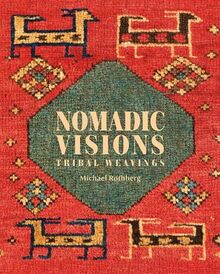Nomadic Visions: Tribal Weavings from Persia and the Caucasus
Nomadic Visions: Tribal Weavings from Persia and the Caucasus, create by Michael Rothberg. The Michael and Amy Rothberg Collection of knotted-pile tribal and nomadic bags and other rare small format pile weavings, among them many pieces made for women's dowries and other ceremonial functions, is recognized as the best of its kind anywhere in the world. The collection has been carefully and thoughtfully assembled over the past four decades. Michael Rothberg's collections are above all distinguished by the collector's acutely sensitive and perceptive eye for the best museum-quality material available on the international market. Specialists in the field and other collectors and tribal weaving enthusiasts have awaited the publication of this part of the Rothberg Collection for many years, ever since a selection of the material was shown at Sotheby's in Los Angeles in a feature exhibition during the American Conference on Oriental Rugs in January 1996. The scope of the collection includes antique pile bags, from the Transcaucasus region, as well as from the Shahsavan, Kurdish, Varamin region, Qashqa'i, Khamseh, Luri, Bakhtiari, Afshar, and Baluch tribes of Iran.
